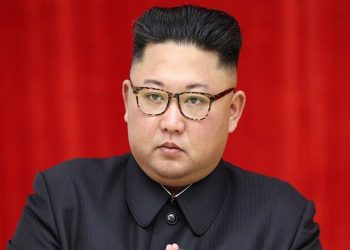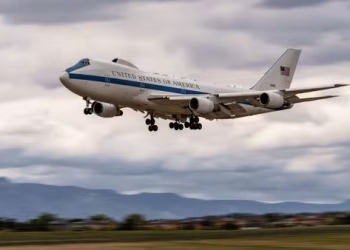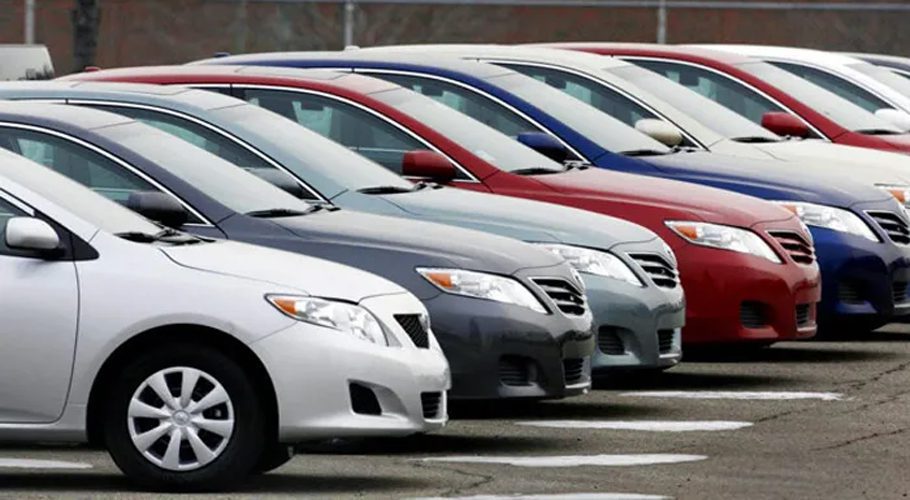SEOUL: North Korea launched a suspected missile that appeared to explode shortly after liftoff in the skies over Pyongyang on Wednesday, amid reports that the nuclear-armed country was seeking to test-fire its largest missile yet.
The United States and South Korea have warned that North Korea may be preparing to launch an intercontinental ballistic missile (ICBM) at full range for the first time since 2017, in violation of United Nations Security Council (UNSC) resolutions.
The projectile was fired from the international airport in Sunan, outside the North Korean capital of Pyongyang, South Korea’s Joint Chiefs of Staff (JCS) said in a statement.
“It is presumed that it failed immediately after launch,” the statement said. It was presumed to be a ballistic missile and seemed to explode in mid-air while still in its booster phase, at an altitude below 20 kilometres (12 miles), a JCS official told media.
A US Department of State spokesperson said it was a “ballistic missile launch” and condemned it as a violation of UN Security Council resolutions, but declined to comment when asked about the reported failure.
Debris fell in or near Pyongyang after the failed test, Seoul-based media reported, citing unnamed witnesses and a photograph of the test showing a red-tinted ball of smoke at the end of a zig-zagging plume that traced the rocket’s launch trajectory in the sky above the city.
The failed launch underscored the danger behind North Korea’s decision to use an airport so close to heavily populated civilian areas as a site for test firing large missiles.
In 2017, an intermediate-range ballistic missile launched from another location in North Korea failed shortly after liftoff and crashed into an industrial or agriculture complex in the city of Tokchon.
READ MORE: North Korea conducts ninth missile test of the year
The Sunan airport has been the site of several recent launches, including on February 27 and March 5. North Korea said those tests were for developing components of a reconnaissance satellite and did not identify what rocket it used.
North Korea has fired missiles at an unprecedented frequency this year, conducting its ninth weapons test on March 5, drawing condemnation from the United States, South Korea and Japan.
The USS Abraham Lincoln aircraft carrier led military exercises in the Yellow Sea, and air defence artillery at Osan air base in South Korea intensified drills in response to the increased North Korean missile activity.
South Korean Defence Minister Suh Wook and US Forces Korea (USFK) Commander Gen Paul LaCamera called for maintaining strong defence posture during Suh’s visit to Camp Humphreys in Pyeongtaek, the largest US overseas military base.
North Korea’s newest and largest ICBM system, the Hwasong-17, was first unveiled at a military parade in 2020 and reappeared at a defence exhibition in October 2021.
North Korea has not tested an ICBM or nuclear bomb since 2017, but has said that it could resume such testing because denuclearisation talks with the United States are stalled. The government also appears to be restoring some tunnels at its shuttered nuclear test site, US and South Korean officials said.
Last week, the United States and 10 other countries bemoaned the failure of the UN Security Council to condemn North Korea’s repeated missile launches. Washington imposed fresh North Korea-related sanctions on Friday, targeting Russian individuals and companies after the two recent launches.

















![Crown Prince of Iran, Reza Pahlavi visit Western Wall (Wailing Wall) in east Jerusalem on April 18, 2023 [Ariel Zandberg (GPO) / Anadolu Agency]](https://mmnews.tv/wp-content/uploads/2025/06/Reza-Pahlavi-visits-Israel-and-prays-at-the-Western-Wall-350x250.jpg)

















